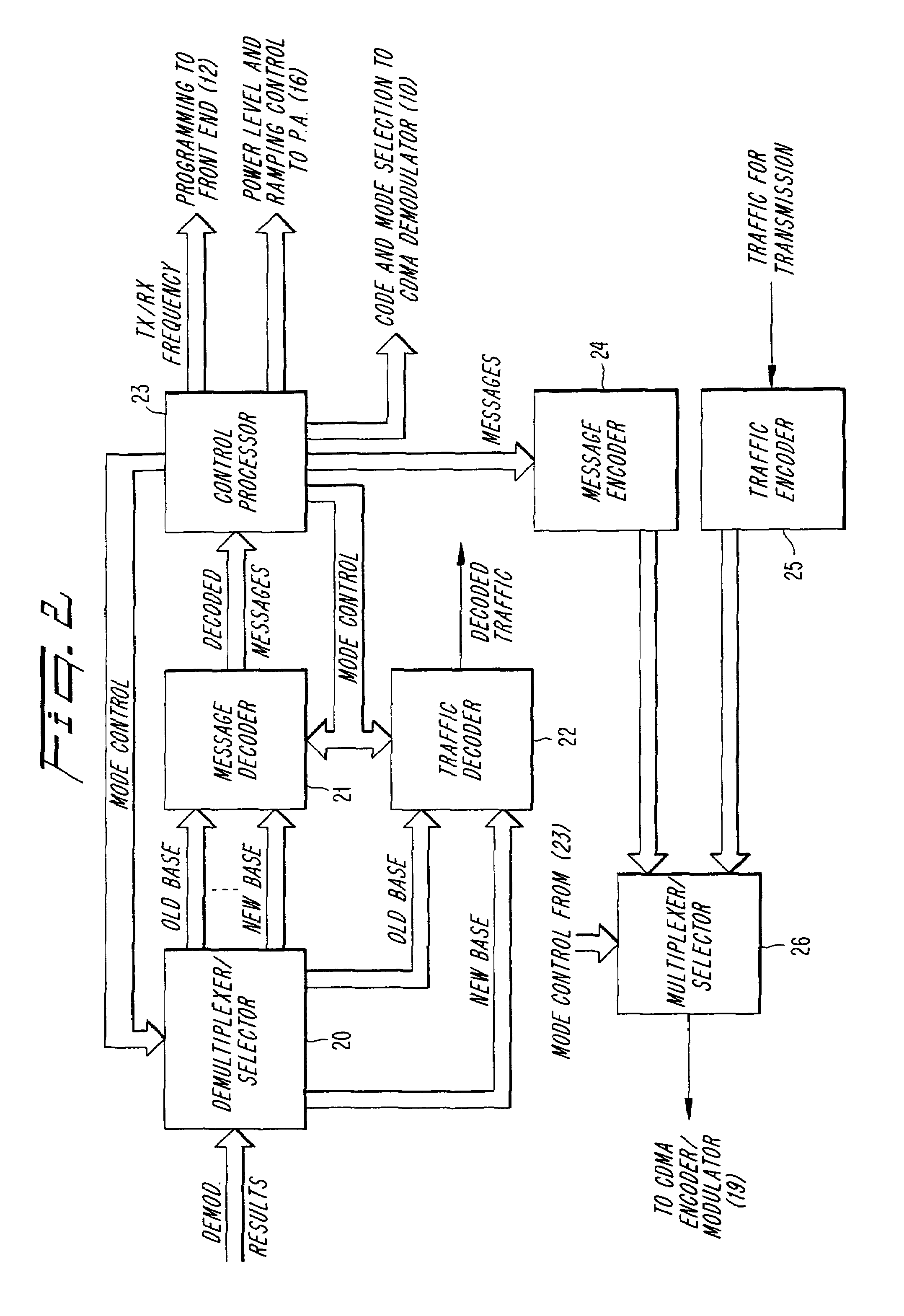Mobile assisted handover using CDMA
a technology of cdma and handover, applied in the field of mobile radio telephone systems, can solve the problems of wasting capacity, too expensive to equip mobile stations with extra receivers, and conventional systems with a number of limitations, and achieve the effect of tdma systems involving a certain waste of capacity
- Summary
- Abstract
- Description
- Claims
- Application Information
AI Technical Summary
Benefits of technology
Problems solved by technology
Method used
Image
Examples
Embodiment Construction
[0016]The present invention will now be described in the context of a subtractive CDMA demodulation system, such as that disclosed in U.S. Pat. No. 5,151,919, entitled “CDMA Subtractive Demodulation” which issued 29 Sep. 1992, and is hereby incorporated by reference. However, those skilled in the art will readily appreciated that the present invention is applicable to any system in which adjacent base stations operate on the same frequency and use signals with coded features enabling them to be distinguished.
[0017]In the above-mentioned application, a system is described in which coded signals are scrambled with unique scrambling codes and then transmitted on the same frequency. A plurality of overlapping signals received on a single frequency channel include a number of signals within the same cell as well as a number of signals transmitted from base stations in neighboring cells. Despite overlap in time and frequency, individual signals can be selected for decoding by first descra...
PUM
 Login to View More
Login to View More Abstract
Description
Claims
Application Information
 Login to View More
Login to View More - R&D
- Intellectual Property
- Life Sciences
- Materials
- Tech Scout
- Unparalleled Data Quality
- Higher Quality Content
- 60% Fewer Hallucinations
Browse by: Latest US Patents, China's latest patents, Technical Efficacy Thesaurus, Application Domain, Technology Topic, Popular Technical Reports.
© 2025 PatSnap. All rights reserved.Legal|Privacy policy|Modern Slavery Act Transparency Statement|Sitemap|About US| Contact US: help@patsnap.com



